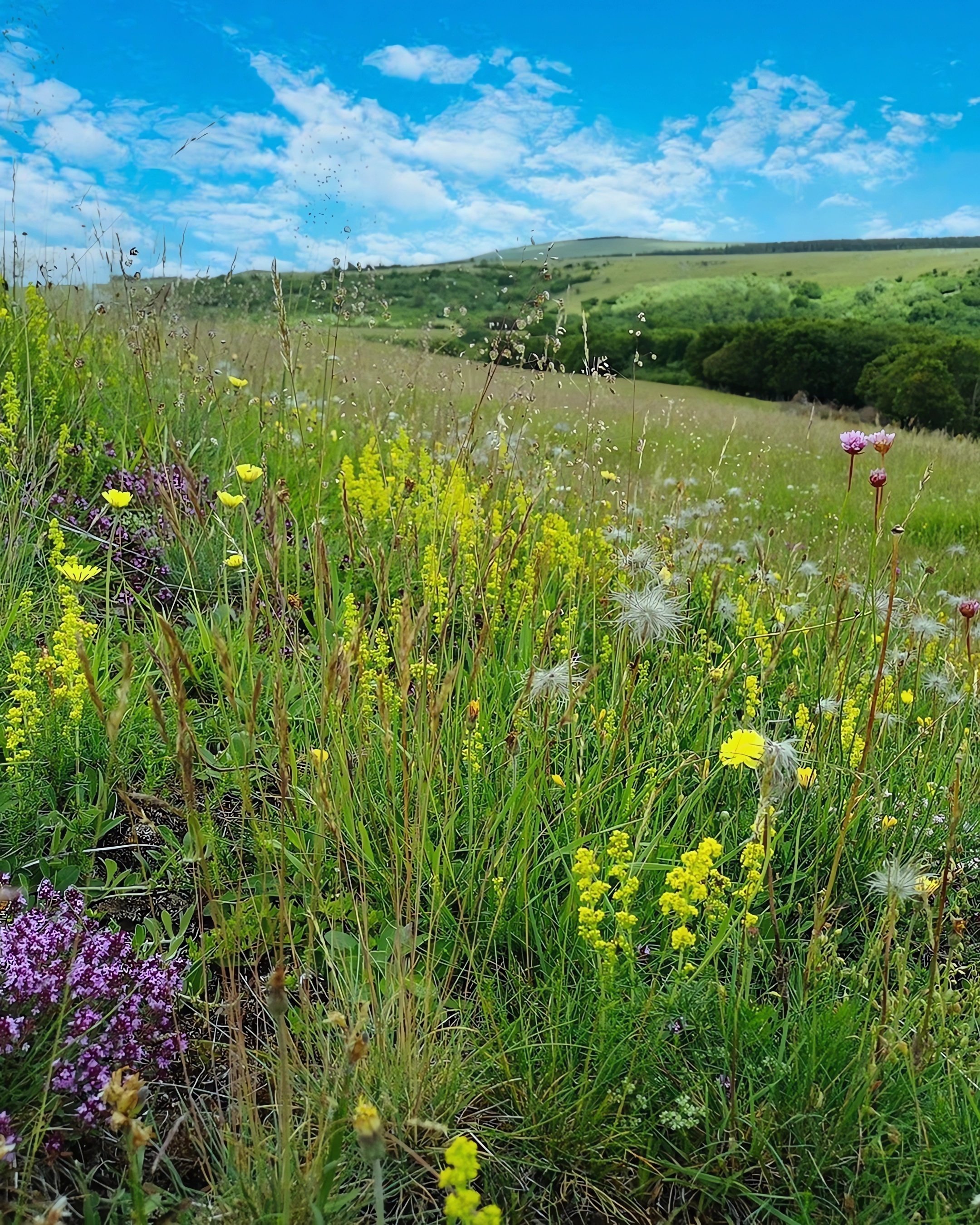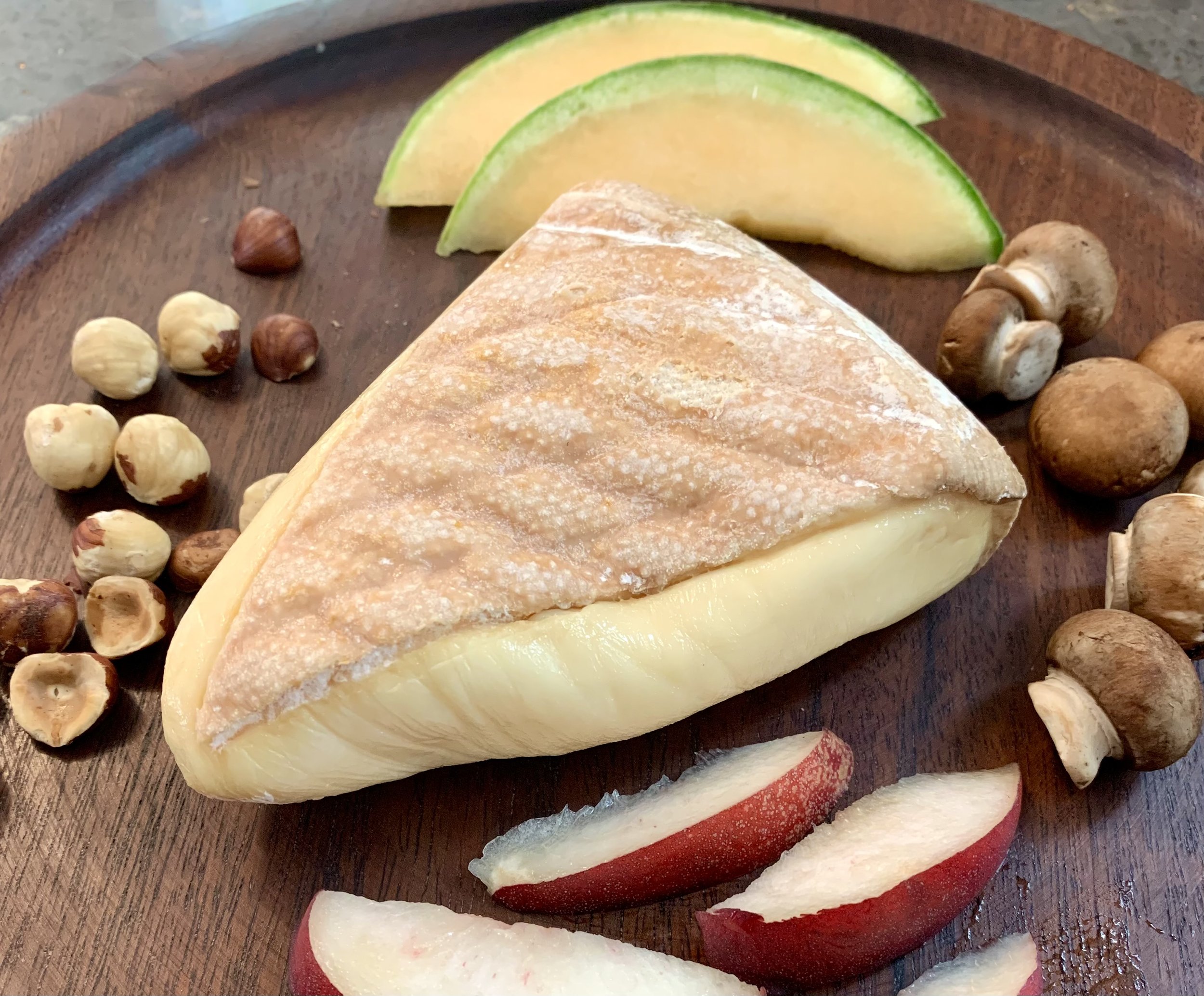Why You Should Thank Ancient French Volcanoes for Delectable Saint-Nectaire Cheese
Wildflowers for grazing photo credit Fromage AOP Saint-Nectaire
In the Auvergne region of central France, 80 dormant volcanoes (which last erupted in 4000 BC) left behind a soil rich in phosphorus, potassium, and magnesium, where verdant meadows are now home to an abundance of wildflowers and grasses, and the lucky rust-colored Salers cows who graze there for at least 140 days a year. Their milk, plus skilled cheesemakers, produce one of France’s most popular cheeses, Saint-Nectaire AOP. Under a brine-washed, bloomy rind, with gray mold on a white to orange background, hides a creamy, smooth, and supple interior with a rich aromatic palette, featuring notes of butter, hazelnuts, or straw. Read more about geographical indication labels like AOP and why they are on cheese.
The lush landscape in the Puy-de-Dôme and Cantal regions of the Auvergne is one gift the ancient volcanoes bequeathed to cheese-lovers. The other is a network of volcanic stone caves, which were dug into the igneous rock more than 100 years ago and provide the perfect environment in which to age the area’s beloved AOP cheese for at least 28 days.
History of Saint-Nectaire
Saint-Nectaire wedge
Saint-Nectaire has a long history. It was originally considered a “country” cheese, reserved for the domestic enjoyment of its producers. In the Middle Ages, peasants paid tribute to their lord with so-called “rye cheese” (because it was matured on rye straw). Then, in the mid-17th century, the name “cheese of Saint-Nectaire” made its appearance, when Marshal Henri de Sennecterre introduced the cheese to the King of France, Louis XIV. The King loved it and subsequently, the cheese made its way from Auvergne on the backs of donkeys and then by boat all the way to the King’s table.
Today, as in ancient times, each wheel of farmstead Saint-Nectaire is unique, varying according to the season, the specific territory, the know-how of the cheesemaker and the care provided by the affineur. (Note: While the focus here is on farmstead Saint-Nectaire, there is also a large market for industrial Saint-Nectaire cheese.)
Saint-Nectaire Figures
The AOP of Saint Nectaire sums up the figures:
3rd cow’s milk PDO cheese in France
1st farmstead PDO cheese in Europe
417 PDO dairy farmers make Saint-Nectaire
19 affineurs, 4 dairies and 7 milk collectors
14,500 metric tonnes of Saint-Nectaire are produced (8,500 metric tonnes of farmstead Saint-Nectaire and 6,000 metric tonnes of Saint-Nectaire produced in dairies.)
859 individual or associated operators, on 225 dairy farms and 207 farmstead farms
Aging Saint-Nectaire on straw mats photo credit Fromage AOP Saint-Nectaire
Maturing process
Affinage is a key step in the manufacture of Saint-Nectaire PDO, thanks to the savoir-faire of the affineurs. The cheeses are generally collected “white” a few days after their manufacture by one of the 19 affineurs in the PDO sector who then ensure ripening for at least 28 days. However, there are also about fifty producers, who are equipped with a cellar on their farm, and carry out the ripening of all or part of their production themselves. The cheeses are washed in salt water at least 2 times in the first 3 weeks of ripening. They are also regularly turned and rubbed, once a week.
Pairings
Saint Nectaire pairings photo by Anna Mindess
According to French cheese expert, Jennifer Greco, “Saint-Nectaire has a rich, unctuous texture and a range of flavors and aromas including hazelnut, butter, yeast, clean sand, and raw mushrooms. I like to serve it with a light to medium red wine such as a Gamay from Beaujolais or a Pinot-Noir from Bourgogne. A Côtes d’Auvergne red would also be a good pairing.”
Members of AOP Interprofession, the association of breeders, cheese makers and refiners of Saint-Nectaire offer additional recommendations:
For lovers of white wine, a Chardonnay grape varietal, with notes of pear, citrus and subtle salinity will sublimate the flavors of the cheese.
For tea drinkers, Oolong tea from China combines well with its notes of chestnut, honey, and hazelnut.
Besides being a natural pairing with hazelnuts, summertime fruits such as melons, peaches, apricots, and nectarines pair well with Saint-Nectaire. And in autumn, try apples, pears, or figs. Also recommended are jams such as gooseberry or blackcurrant. The hint of acidity in the red fruits will combine well with the soft and creamy cheese.
After enjoying it on its own, Saint-Nectaire is highly versatile and often incorporated into cheese-forward dishes, such as gratins, fondues, quiches, omelets, souffles, pizza and many other creations.
Saint-Nectaire picnic photo credit Fromage AOP Saint-Nectaire
Who Pinched the Cheese?
In 2018, 659 blocks of Saint Nectaire were stolen in an overnight heist from a volcanic aging cellar by a group of sophisticated—if not hungry—thieves as they only pilfered the ripest rounds. Their booty, worth $12,000, was never recovered. It was assumed that the thieves sold the popular cheese at local farmers markets – but it’s always possible that they just hosted the most fabulous picnic. Read more about cheese heists.





